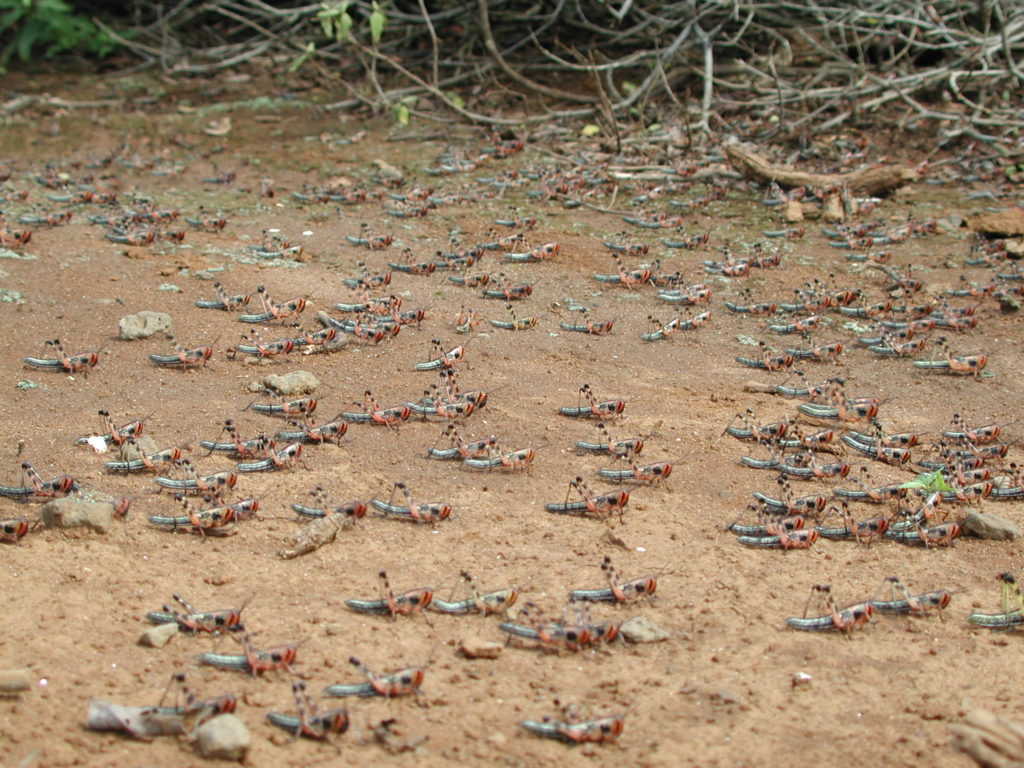Tuesday, December 8th
Virtual Zoom Meeting
07:30 PM EST
Join Zoom Meeting Here
From cricket songs to swarming locusts: Elucidating patterns and processes of orthopteran evolution
Hojun Song
Associate Professor
Department of Entomology, Texas A&M University

Orthoptera is the most diverse order within Polyneoptera with more than 28,000 species known worldwide, and includes familiar insects, such as grasshoppers, crickets, and katydids. Throughout 350 million years of evolution, orthopteran insects have diversified into numerous lineages that occupy every conceivable terrestrial habitat outside the polar regions and play integral roles in their ecosystems. Such diversity in form and function has attracted researchers who use these insects as model systems for studying anatomy, bioacoustics, chemical ecology, evolutionary ecology, life-history traits, neurobiology, physiology, and speciation. Dr. Song’s research program uses Orthoptera as a model system to understand behavioral, ecological, physiological, morphological and molecular evolution in a phylogenetic framework. In this presentation, Dr. Song will provide two fascinating examples of how orthopteran insects can be used as model systems for elucidating patterns and processes of evolution. In the first example, which examines the patterns of evolution at a macro scale, he asks how various singing orthopterans evolved the ability to sing and hear based on a new phylogenomic analysis and ancestral character reconstruction. In the second example, Dr. Song will zoom into one particular clade of Orthoptera, the grasshopper genus Schistocerca, to investigate the evolution of density-dependent phenotypic plasticity in grasshoppers and locusts. He does so by integrating phylogenetics, transcriptomics, manipulative behavioral experiments, and field research to understand what makes swarming locusts different from regular grasshoppers.
Hojun Song grew up in South Korea, wanting to become an entomologist ever since his childhood. He moved to the U.S. in 1994, and received his bachelor’s degree in entomology from Cornell University in 2000. He moved to the Ohio State University, and received his M.S. (2002) and Ph.D. (2006) in entomology. His dissertation focused on the morphological systematics of a grasshopper subfamily Cyrtacanthacridinae, with an emphasis on the evolution of locust phase polyphenism and the evolution of male genitalia. Dr. Song then moved to Brigham Young University for his postdoc to study the evolution of beetle mitochondrial genomes, where he was introduced to molecular phylogenetics and developed his interests in mitochondrial and numt evolution. In 2010, Dr. Song joined the Department of Biology at the University of Central Florida as an assistant professor, and in 2015, he relocated to the Department of Entomology at Texas A&M University, where he is currently an associate professor. Dr. Song’s current research program has two broad themes: orthopteran systematics and the evolution of locust phase polyphenism. His research program has been continuously supported by various funding agencies, including NSF, USDA, and CONACYT, and he has published over 60 peer-reviewed papers. He received the NSF CAREER award in 2013, and the Fulbright Future Scholarship from the Australian-American Fulbright Commission in 2019.
In compliance with the COVID-19 social distancing guidelines, we are temporarily suspending all physical meetings and pre-talk dinner until further notice.
CEC meetings are normally held the second Tuesday of the month from October through May. The evening schedule typically includes an informal dinner (5:45 to 7:15 PM) followed by our formal meeting (7:30 – 9:00 PM). The latter begins with club business and is followed by a 60-minute entomology related presentation. Membership is open to amateur and professional entomologists.



